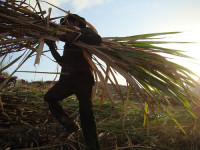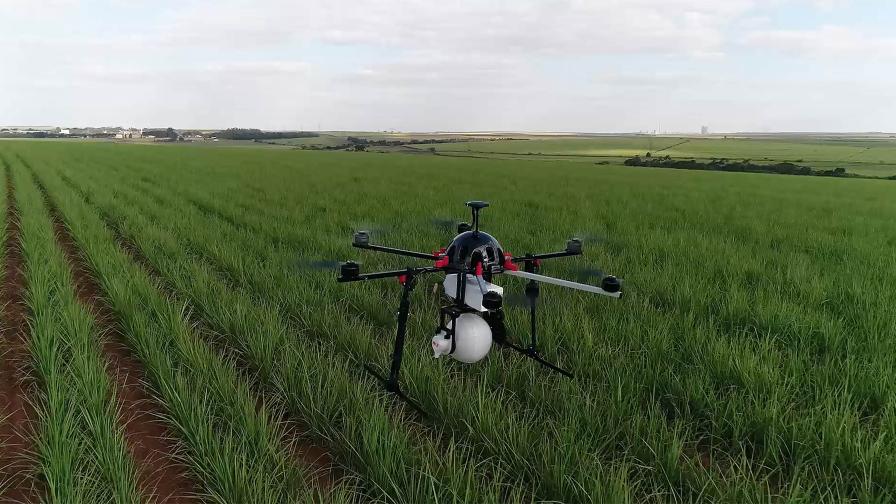View From The South

Brazil is likely to continue to be the leading country in the global crop protection market, says Frost & Sullivan’s São Paolo-based chemicals analyst Alessandra Lancellotti, who expects the market to grow at a CAGR of 4.8% through 2016. “The growth potential for agriculture is enormous given available arable land, since permanent crops occupy only 8% of Brazil’s land area,” says Lancellotti. She offered Farm Chemicals International her take on the outlook for agrochemicals in Brazil and Argentina.
FCI: Can you talk a bit about the trends you are seeing in Brazil’s crop protection sector?
The crop protection market in Brazil is highly oriented to customized and cost-effective solutions, and these features should be considered by companies to compete effectively in the chemicals market. It is important for market participants to focus on profitable products and applications. More selective products that are able to act over specific plagues and have reduced environmental impact will be preferred.
Estimates from the Brazilian Syndicate for the Crop Protection Industry (SINDAG) indicate that Brazil uses around 4 kg of active crop protection chemicals per hectare, while in France and Japan, this volume is about 10 kg per hectare. This indicates that there is scope to increase productivity in Brazil, and technology improvement investments should be done by the leading companies.
By 2015, Brazil’s production of cultures such as soybean, wheat, rice, corn, and beans is expected to increase by at least 20 million metric tonnes. The cultivated land is expected to increase by 10 million hectares for these cultures in the same period.
The past years have also witnessed an increase in marketing campaigns within the industry. Efforts to differentiate products and create brands have become more popular, and some companies have attempted to define their “personality” within an increasingly competitive market that sells commoditized and homogeneous goods.
FCI: Regionally, where are the biggest opportunities for off-patent herbicides, insecticides and fungicides?
Herbicides represent 64% in revenues within Brazil’s crop protection segment, and they are likely to continue growing due to the high applicability in cultures such as soybean and corn.
In addition, herbicides are suitable for monocultures and intensive land use, which is found widely in Brazil. They are expected to grow slightly more when compared to insecticides, fungicides and others. Insecticides, however, receive the most investments for product innovation.
In Brazil, patented crop protection chemicals account for 30% of market volume, while generic products account for 70%. Patented products account for 40% of market revenues, while generic products account for the remaining 60%.
Herbicides also dominate the sector in Argentina with 67% of market share in 2010. Insecticides form the second-largest segment with 18%, fungicides with 12% and other products, 3%.
Glyphosate represents 64% of revenues in Argentina’s herbicides segment. Premium products comprise approximately 40% of the total glyphosate market.
In Argentina, as technology grows, demand for premium products such as specific glyphosate formulations should continue to expand. Simultaneously, use of generic products will persist. Therefore, it is important that firms present clients with both options to satisfy different types of needs within the market.
If prices of generics do not increase in the near future, especially in the case of glyphosate, whose price depends on the Chinese market, many firms are expected to leave the crop protection market due to low margins and high competition.
FCI: How difficult is getting a product registered today in Brazil?
The agrochemicals registration process is very bureaucratic in Brazil. Manufacturers have to be prepared for a series of technical tests and possess documents to present to the regulatory organizations in order to prove their products’ efficacy and ensure that they do not harm the environment and human health.
In this stage, the company is in a period called Temporary Special Registration (TSR). The documentation and technical information are analyzed by the Brazilian Ministry of Agriculture, the National Sanitary Surveillance Agency (ANVISA) and the Brazilian Environmental Institute (IBAMA), besides being audited by private organizations. Only after receiving approval from all the entities are manufacturers allowed to commercialize their products.
Due to the lack of uniformity among the organizations involved, the total registration process, from the R&D stage to commercialization, can take, on average, 10 years. If there are no structural changes in the process, the impact is expected to be high in the medium and long terms of the forecast period through 2016.
ANVISA has about 2,200 registered crop protection products.
FCI: What direction do you think government policies are headed that might restrict or stimulate growth of crop protection chemicals?
The lack of credit in 2008/09 was one of the factors for the decline in the total Brazilian agrochemicals market revenues during the economic downturn.
Brazil has a significant number of small- and medium-sized farmers, for whom credit support and government subsidies are fundamental for business sustainability.
From the beginning of 2010, banks were more willing to give credit to the agricultural sector, and currently the government is developing some programs to facilitate the growth of the sector.
Brazilian local taxes are high compared to other countries. For instance, agrochemicals sold between states are subject to a duty, Impostos Sobre Circulação de Mercadorias e Prestação de Serviços (ICMS) – a tax that does not exist in other countries.
FCI: What are the top things chemical companies seeking to enter these markets should look out for?
1.) The Brazilian crop protection market has high entry barriers, such as high expenditures on R&D and product licensing (patents). Besides, new entrants should be able to invest heavily on the distribution chain and provide specialized technical support, which requires trained staff and a quality control laboratory. These entry barriers partially explain the consolidation trend in the crop protection chemicals market in Brazil; companies must have scale and be robust to invest and grow.
2.) The introduction of genetically modified crops has been changing the market dynamics, requiring new types of herbicides and pesticides. Companies on the supply and distribution side must ensure that their product lines are updated according to the end-user needs and new technologies.
3.) Inflation levels and increasing operational costs: Privately estimated to be about 25% annually, inflation’s impact on the cost structure of production processes and commercialization is quite relevant. The manner in which it affects costs, particularly manual labor and transportation, make planning difficult for agricultural producers. Added to recent variations in the exchange rate, and the fact that the crop protection chemicals market is commoditized and consequently measured in dollars, price scenarios are unbalanced. Hence, in many cases, agricultural producers become opportunity customers, waiting until the last moment possible to execute purchases.
4.) Growth of Chinese imports: Chinese products enter the crop protection market with lower qualities and lower prices and are extremely difficult to compete with in the current market scenario, as cost is the decision variable. Some Chinese firms have taken control of local companies and grain crushers and are beginning to sell their products through their own commercial chains.





